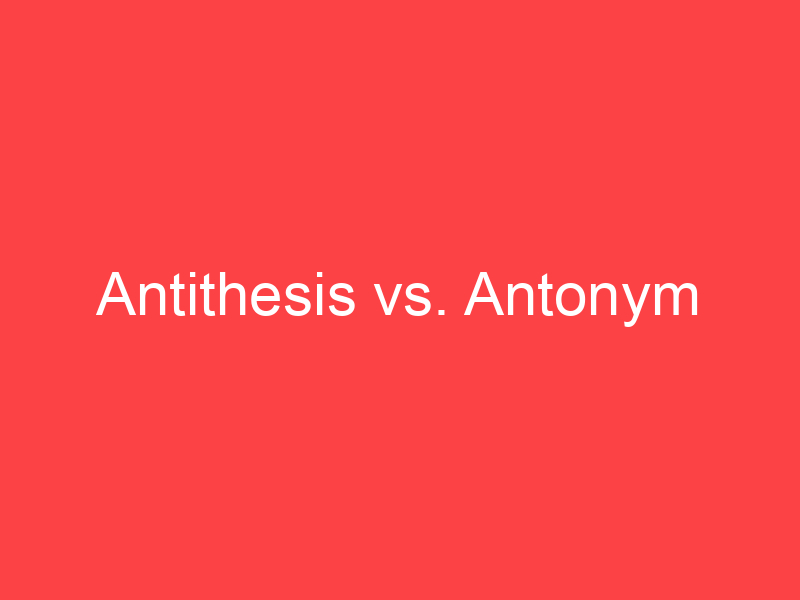-
Antithesis
Antithesis (Greek for “setting opposite”, from ἀντί “against” and θέσις “placing”) is used in writing or speech either as a proposition that contrasts with or reverses some previously mentioned proposition, or when two opposites are introduced together for contrasting effect.Antithesis can be defined as “a figure of speech involving a seeming contradiction of ideas, words, clauses, or sentences within a balanced grammatical structure. Parallelism of expression serves to emphasize opposition of ideas”.An antithesis must always contain two ideas within one statement. The ideas may not be structurally opposite, but they serve to be functionally opposite when comparing two ideas for emphasis.According to Aristotle, the use of an antithesis makes the audience better understand the point the speaker is trying to make. Further explained, the comparison of two situations or ideas makes choosing the correct one simpler. Aristotle states that antithesis in rhetoric is similar to syllogism due to the presentation of two conclusions within a statement.Antitheses are used to strengthen an argument by using either exact opposites or simply contrasting ideas, but can also include both. They typically make a sentence more memorable for the reader or listener through balance and emphasis of the words.
-
Antonym
In lexical semantics, opposites are words lying in an inherently incompatible binary relationship, like the opposite pairs big : small, long : short, and precede : follow. The notion of incompatibility here refers to the fact that one word in an opposite pair entails that it is not the other pair member. For example, something that is long entails that it is not short. It is referred to as a ‘binary’ relationship because there are two members in a set of opposites. The relationship between opposites is known as opposition. A member of a pair of opposites can generally be determined by the question What is the opposite of X ?
The term antonym (and the related antonymy) is commonly taken to be synonymous with opposite, but antonym also has other more restricted meanings. Graded (or gradable) antonyms are word pairs whose meanings are opposite and which lie on a continuous spectrum (hot, cold). Complementary antonyms are word pairs whose meanings are opposite but whose meanings do not lie on a continuous spectrum (push, pull). Relational antonyms are word pairs where opposite makes sense only in the context of the relationship between the two meanings (teacher, pupil). These more restricted meanings may not apply in all scholarly contexts, with Lyons (1968, 1977) defining antonym to mean gradable antonyms, and Crystal (2003) warns that antonymy and antonym should be regarded with care.
-
Antithesis (noun)
A proposition that is the diametric opposite of some other proposition.
-
Antithesis (noun)
A device by which two contrasting ideas are juxtaposed in parallel form.
-
Antonym (noun)
A word which has the opposite meaning of another word.
“opposite”
“synonym”
““rich” is an antonym of “poor”; “full” is an antonym of “empty””

